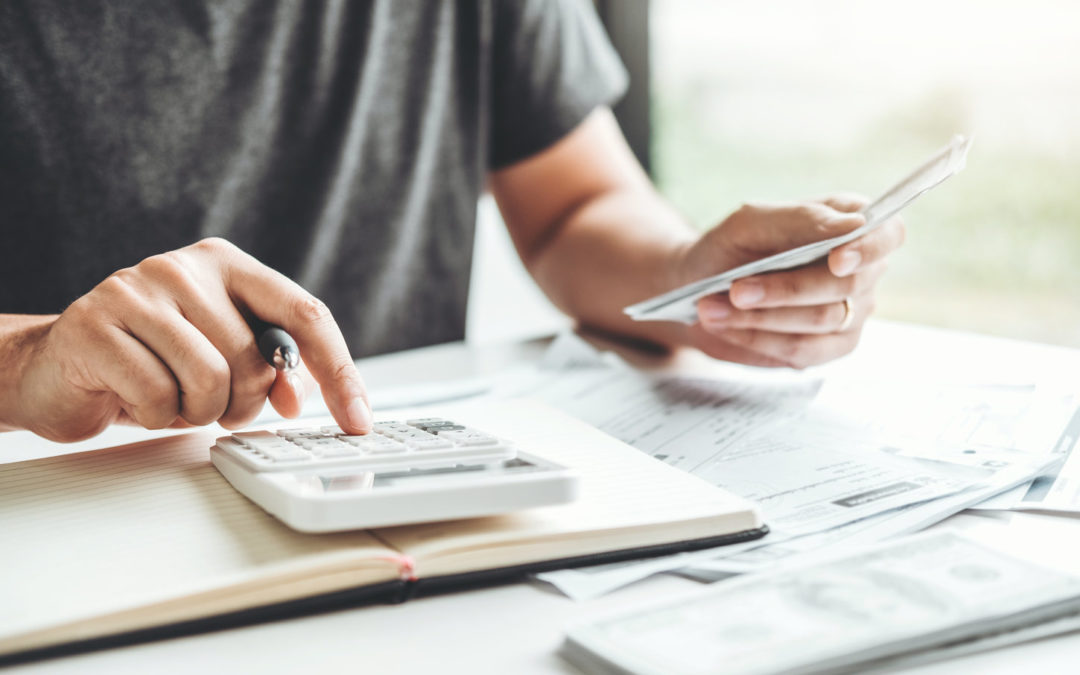Debt can be overwhelming, and trying to pay off multiple sources of debt at once—credit cards, student loans, car payments, and other financing—often seems impossible. It doesn’t help that life is full of expenses, such as home repairs, job loss, and medical bills, which can lead to additional debt.
Are you struggling with debt? There are a number of strategies you can use to start paying it down. The first place to start is setting up a good budget that tracks your spending and income, sets limits on discretionary spending, and includes savings goals. Once you have a solid budget in place, you can use your budget to pay off debt. These four steps will show you how to create a budget you can use to finally get out of debt.
1. Track Your Income and Expenses
First, you need to know what you’re spending each month and how much money you have to work with. Review your bills for the past year to figure out how much you pay each month on essential expenses such as rent or a mortgage payment, utilities, insurance, essential groceries, regular medical expenses, gas or transportation, and debt minimum payments.
In addition to these necessary expenses, start tracking all your spending, including entertainment, software and app purchases, eating out, etc.
2. Cut Unnecessary Expenses
Once you have a good idea of where all your money is going, consider any unnecessary expenses you can live without. You can’t reduce your rent or skip your mortgage payment, but do you need to see new movies in the theater that you can wait to rent?
Live frugally. Separate your “wants” from your “needs,” and make plans to cut back on purchases that aren’t necessary. You may need to make some sacrifices now, such as buying used clothes or making do with an older car, but the extra money you save will help you use your budget to pay off debt.
3. Set Aside Savings
When money is tight, the last thing you might want is money sitting unused in the bank while you struggle to make debt payments. But having a solid savings account is the key to using your budget to pay off debt. Life is filled with unexpected expenses, and having good-sized savings or emergency fund will keep you from going into more debt when your windshield cracks or your hot water heater breaks.
Set aside some money every month for savings. If your paycheck comes through direct deposit, set up a portion of it to go directly into your savings account. Shoot for putting 20% of your income in savings per month. If that’s a stretch, start smaller—like 10% or even 5%—and build it up.
4. Put Your Plan into Action
Open up a spreadsheet (or use pen and paper) and write down the expenses you identified in the previous steps. Separate necessary and unnecessary expenses, and write down how much you want to spend in each category. Leave room for savings, and continue to look for ways to cut expenses. Put anything leftover into paying off your debt—pay as much as you can afford to on top of your minimums. Each month, check your spending to make sure you’re following your budget. Make adjustments as needed.
Using a Budget to Pay Off Debt
Your budget is a valuable tool that will help you pay off your debt. Following it helps you find more money to put into your debt payments. It also helps you set aside money for savings so you don’t need to add to your debt or fall behind on debt payments when an unexpected expense comes up.
Another great tool is debt relief, which is a lump sum payment to your creditors. A goal in your budget could be saving to pay for this lump sum payment. Consider meeting with a debt relief counselor for help paying off your debts for good. To get started, get a free debt assessment from CreditAnswers.



